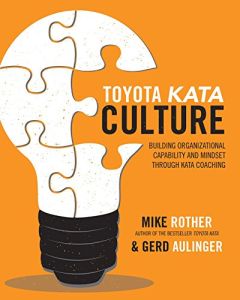
Toyota Kata Culture
Building Organizational Capability and Mindset Through Kata Coaching
Recommendation
This short, detailed guide to implementing a Toyota Kata culture in your organization includes descriptions and examples of “Kata coaching” that you’ll need to work with the Kata processes. “Kata” is a Japanese term for a routine or pattern that improves your practice. Using a fictional manufacturing firm as a case study throughout, authors Mike Rother and Gerd Aulinger leave little room for misunderstanding. Their workbook provides an excellent introduction and guide to starting the transformation to continual learning and organizational improvement. As the authors warn, you’ll encounter challenges and complexities when implementing Kata. But, after you conquer those obstacles, Rother and Aulinger say, the rewards – including better, more structured problem solving and improved results – will make it all worthwhile. getAbstract recommends this lively, readable workbook to leaders and project managers seeking a logical, repetitive and scalable process for reaching their goals.
Summary
About the Authors
Mike Rother, who works with people and organizations on scientific thinking skills, also wrote Toyota Kata, The Toyota Kata Practice Guide, Creating Continuous Flow, and, with John Shook, Learning to See. Gerd Aulinger advises organizations on improving people and customer value.



















Comment on this summary